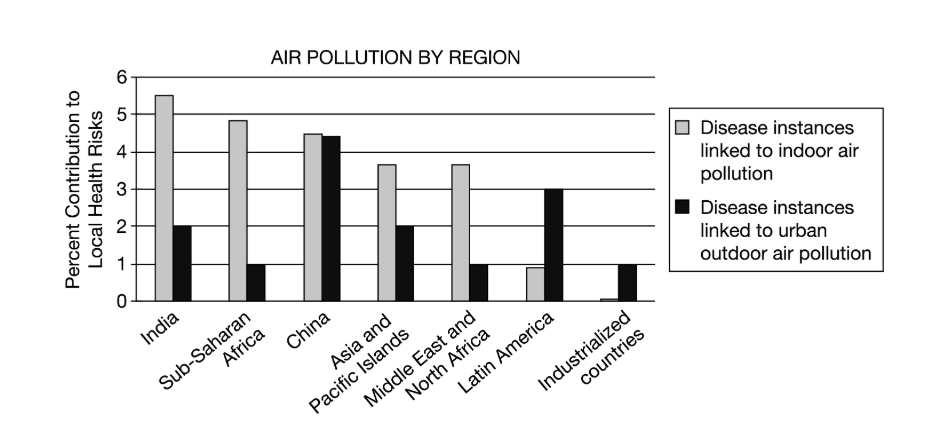Indoor air pollutants
1/3
There's no tags or description
Looks like no tags are added yet.
Name | Mastery | Learn | Test | Matching | Spaced |
|---|
No study sessions yet.
4 Terms

Which of the following conclusions can be drawn from the data presented in the graph?
A) In moderately developed regions such as China and Latin America, an individual’s health is more or as likely to be affected by urban outdoor pollution than by indoor pollution.
B) Developing regions such as sub-Saharan Africa are less affected by indoor air pollution because there is no source of radon in the region.
C) Indoor air pollutants decrease and urban outdoor pollutants increase as countries become more industrialized.
D) The amount of both indoor and outdoor air pollution is directly linked to the size of each region.
A) In moderately developed regions such as China and Latin America, an individual’s health is more or as likely to be affected by urban outdoor pollution than by indoor pollution.

Which of the following activities would most likely account for the levels of indoor air pollution in India and sub-Saharan Africa, as shown in the graph?
A) Construction of homes with more efficient insulation and increased ventilation
B) Use of biomass fuel sources such as wood and charcoal for cooking
C) Industrial power plants burning fossil fuels for electrical energy generation
D) Use of chemical pesticides on croplands
B) Use of biomass fuel sources such as wood and charcoal for cooking

Which of the following conclusions can best be drawn from the data in the graph?
A) Location has the greatest need for remediation because the radon levels in the building are the highest and exceed the action level.
B) Location has the lowest need for remediation because the radon levels in the building are below the suggested action level.
C) Location has the greatest need for remediation because the radon levels in the soil are the highest.
D) Location has the lowest need for remediation because there is no measurable radon in the air or the soil samples.
A) Location has the greatest need for remediation because the radon levels in the building are the highest and exceed the action level.
lol
lol